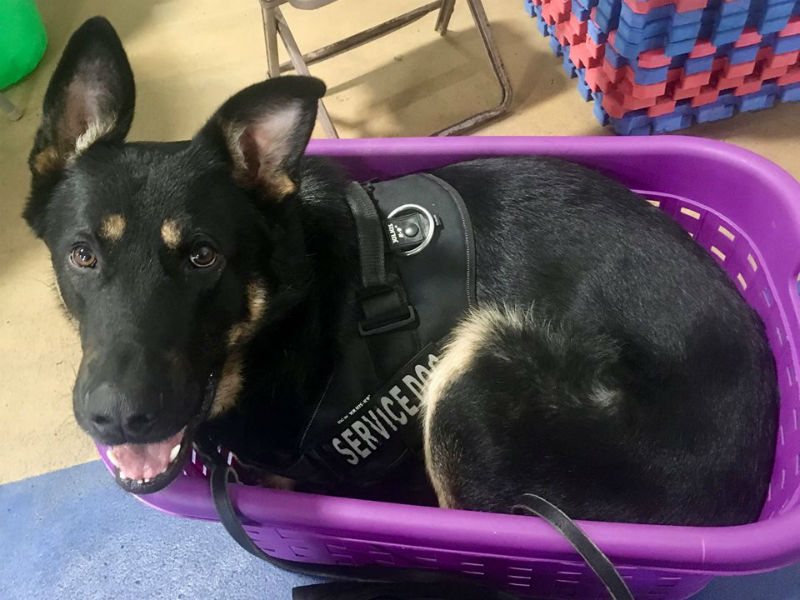
Header photo courtesy of Kathy Green
When it comes to the Great Box Challenge, there simply are no limits—on size, shape, or container.
And those loose parameters apply to the participants, too, that range from tiny Chihuahuas to giant St. Bernards, Leonbergers, and Newfoundlands.
This discipline tests owners' ability to coax and position their dogs into the smallest container possible. But “box” is being used pretty loosely these days, although it originated pretty much with cardboard grocery store boxes. You could use a hatbox, plastic laundry basket, suitcase, or even a wooden crate. One owner even tried a drawer from her bedroom’s chest-of-drawers.

“The original intent of the exercise, 25 years ago, was service dog-related,” says Dana Babb, lead trainer of Paws-Abilities Total Dog Center in Fife, Wash., a Tacoma suburb.
“At the time, service dogs were somewhat new, and we wanted to have those we trained sit unobtrusively and safely under tables in public places.”
In addressing that issue, Babb used boxes and laundry baskets to teach the dogs to tuck their feet in and maneuver their tails out of the way of human traffic in restaurants and stores. Other clients watched and liked what they saw. Hence, it gradually became part of the training protocol. Today it is Lesson 3 in the facility’s Beyond Basic class.
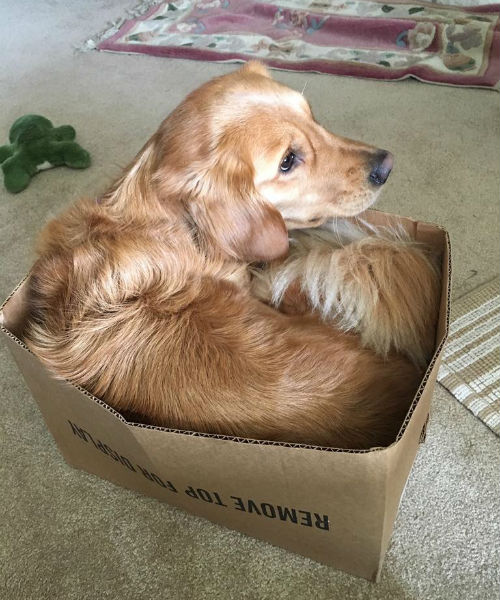
“For every dog, it is an amazing confidence builder,” explains Babb. “Boxes are strange and somewhat scary to them at first. Some dogs take weeks to get in. Others are not intimidated at all and work their way in within minutes.”
Another perk of the Great Box Challenge is how it serves as a conduit for the owner to better grasp how his dog thinks, teaching him to establish better teamwork with the animal through improved communication.
“There is no right or wrong way,” Babb continues. “It’s all about strengthening your relationship with your dog and having fun doing it.”
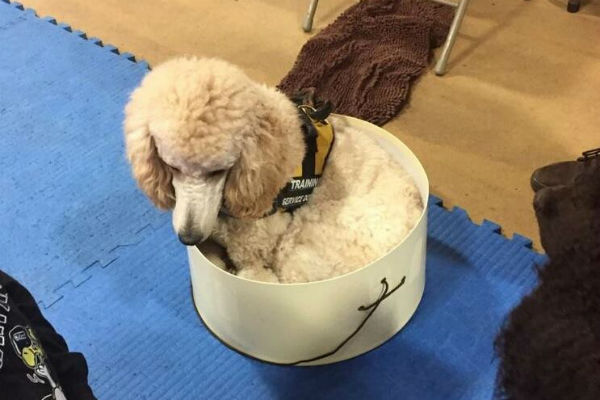
It’s not your basic sit, stay, down, heel, etc., where the human partner is in charge. Here, each trusts the other, establishing a growing and stronger rapport en route to the time when the dog willingly sits or curls up in the box.
Here are a few other perks of the Great Box Challenge:
1. It eliminates boredom for Fido, when he may be getting a bit tired of continued repetition in basic training.
2. It establishes pride that segues into basic and advanced training.
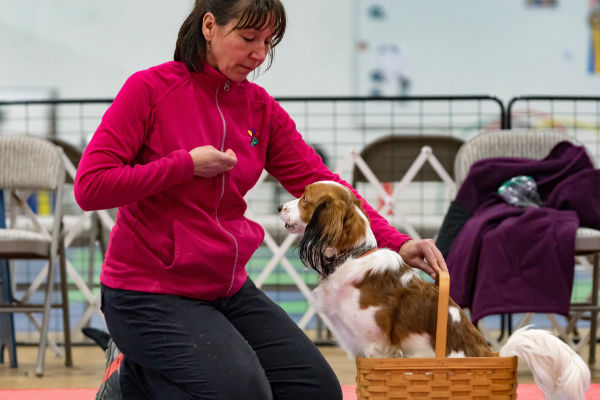
3. It encourages communication when happy clients shoot photos of their dogs in a box and post them on social media sites, prompting engaging conversations with friends.
4. It’s a weather-beater in inclement weather. OK, so it’s rainy and windy out there, and you choose not to venture out with your dog. Well, pull that box out of the closet and get to work. Yes, there is some physical exercise here, too.
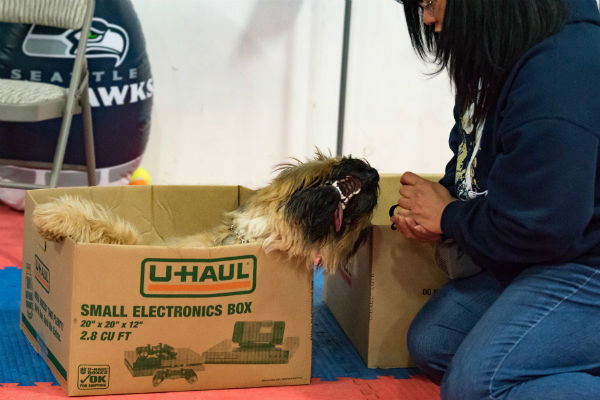
“It teaches body awareness to the dog, too,” adds Babb. “They understand body mechanics and what it takes to position themselves into a container. For some, it’s kind of like a crate, in that it becomes the dog’s haven away from the heart of action in the home. I remember one owner who went looking for her dog and couldn’t find him. Minutes later, she found him curled up in his box in the bedroom.”
While most would identify the physical challenges for the dog to maneuver into the box, the longtime trainer emphasizes that one “muscle” that gets used continually is the one between the ears. That’s right, the brain! “Particularly when they get started, there is a thinking process they undergo as to 'how I am going to get myself into that little container.' In a class environment, some learn by watching others, and build up a little confidence in the process.”
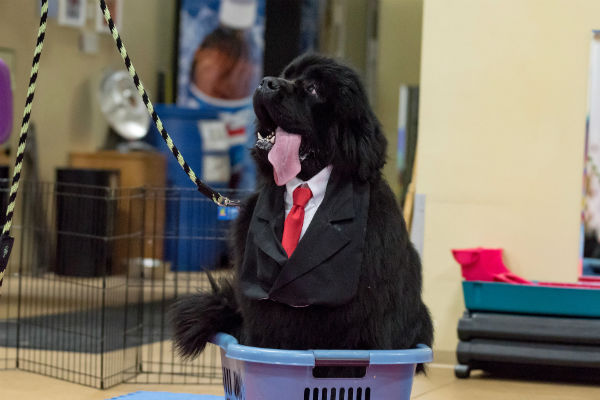
Oh, and in case you’re wondering, there’s only one rule here. You cannot place your dog in the box. He must distinguish how he is going to jump in there… on his own.
Photos by Stacey Davila

